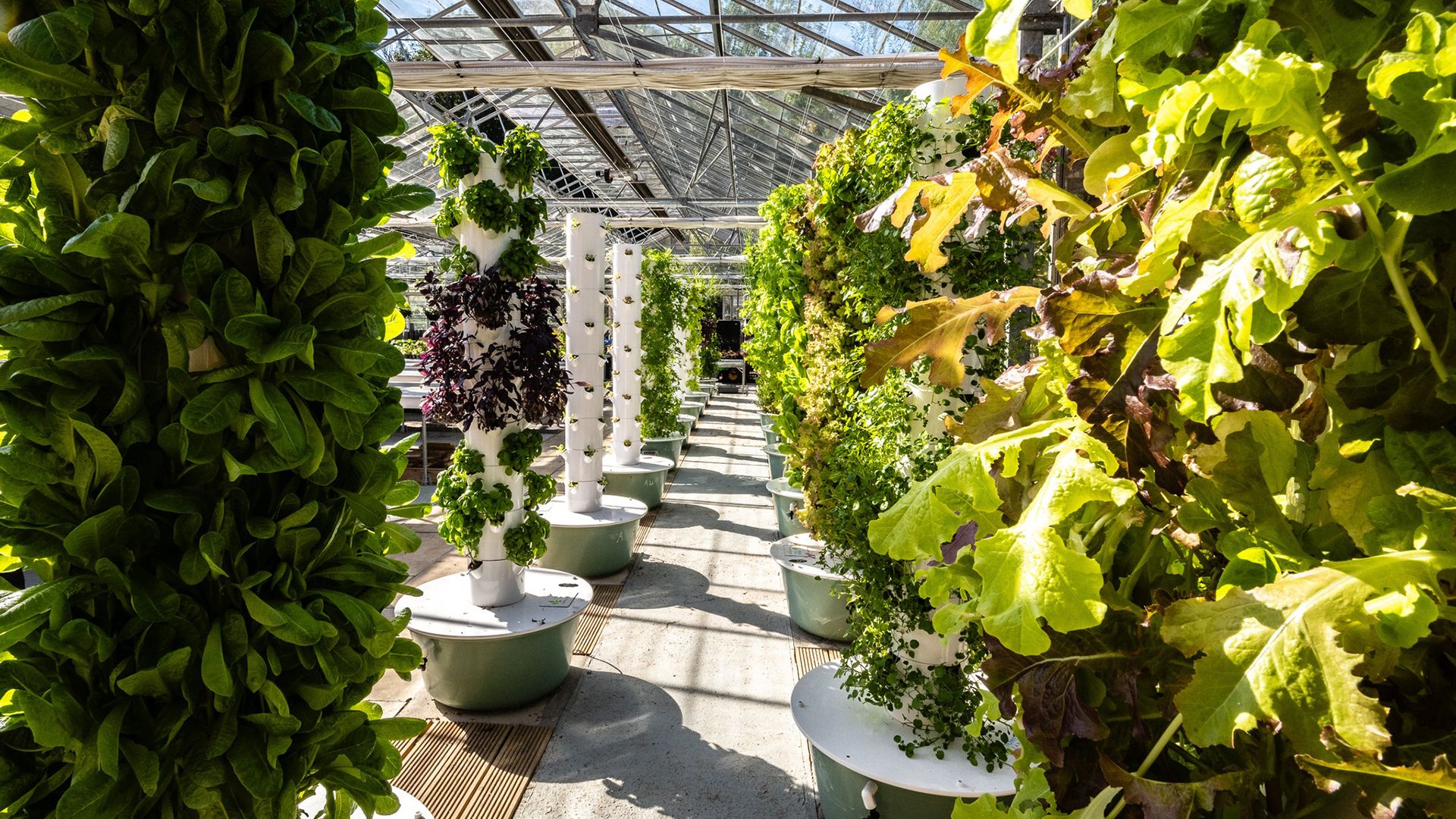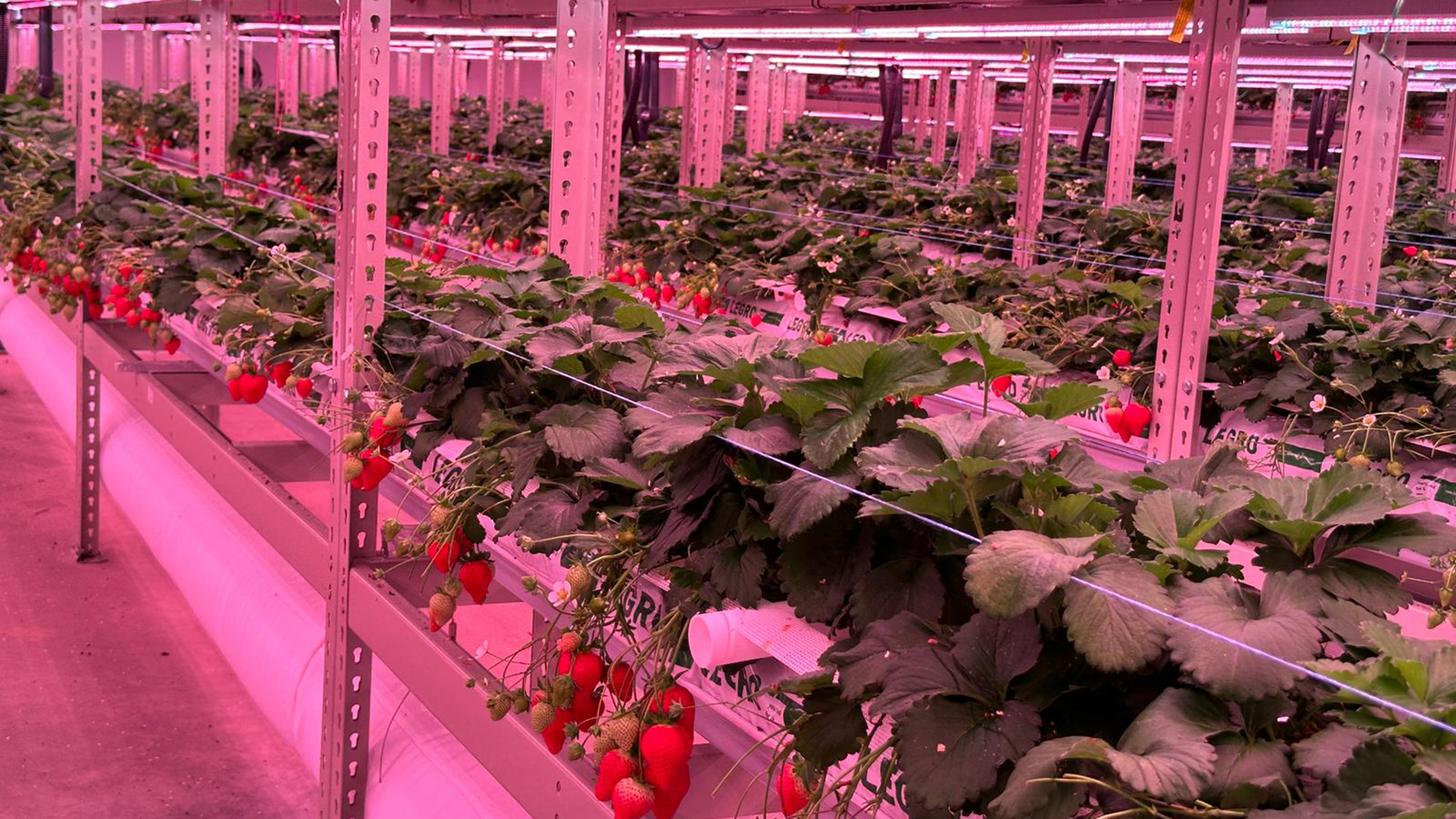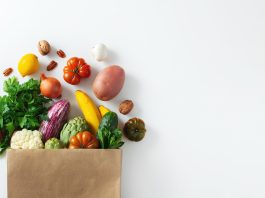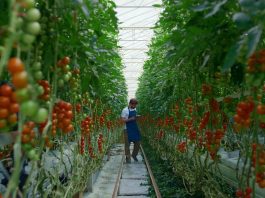Between climate change, disease, loss of soil health, and more, the agricultural sector is facing a myriad of challenges – urban farming could solve these issues.
Urban farming is simply the practice of farming foods in an urban setting, towns, cities, etc.
UK Urban Agritech’s (UKUAT) Founder and Chairman, Mark Horler, sat down with The Innovation Platform’s Assistant Editor, Matt Brundrett, to discuss their work and the world of urban farming.
What benefits does urban farming offer for urban residents and the environment?
What urban farming ultimately does is position food-growing closer to where people live. Much of our food is imported into the UK, and this is especially true of fresh produce. Long, complex supply chains are well-established but are vulnerable to acute shocks and disruptions. In the longer term, our food systems often rely on production in areas that are likely to be affected by chronic challenges such as climate change. Moreover, people are disconnected from food in the broader sense – often not knowing where and how their food is produced or by whom.
Urban agritech offers some degree of solutions and support for all of these problems. In the first instance, growing food more locally (hyper-local, as it is called) reduces the risk of short-term supply shocks, though some questions remain about how to scale up and down the supply of produce and the supply of consumables required for production. Dramatically scaling up urban and peri-urban farming could also reduce the chronic longer-term risks to supply in that it could partially or wholly replace entire supply chains for some produce. If this also serves to reduce emissions from the transport of produce, that is also an added benefit! Perhaps most importantly, growing food where people live aids transparency, traceability and, crucially, trust in food production. End consumers often highlight this as a notable benefit of urban farming, although questions remain about how to reach price parity with conventional produce.
Which crops are commonly grown in urban farming, and how does this contribute to local food security?
The most commonly grown crops in the urban vertical farms are leafy greens such as salad crops, herbs, microgreens, and more exotic crops such as edible flowers. Gourmet mushrooms have also been a popular choice for prospective urban growers. In greenhouse environments, crops such as tomatoes, aubergines, peppers, chilis and others of a similar kind are often grown alongside the leafy greens they have in common with the vertical farms. There is an ever-increasing interest in soft fruits, too, most notably strawberries, but increasingly also considering the potential of other berries and related crops.
There are two ways to think about food security. In the first instance, crops grown in urban areas can help to provide nutritional security, especially with regard to particular micro-nutrients which may otherwise be lacking in local diets. This has important potential health implications, and there is, therefore, a strong argument for public procurement of such crops, for example, in schools and hospitals, so that those benefits might be best realised. It is also worth noting that a key component of a good food policy is to provide safe, healthy, nutritious and culturally appropriate food. By giving people access to healthy food that is culturally appropriate to them, market demand can be met whilst at the same time ensuring all people get what they need.
The area of food security as a whole is more nuanced since staple crops are not currently grown in urban farms and are not likely to be so anytime soon. That said, urban farms, and especially large-scale peri-urban farms, may be able to support resilience in the food system. If supplies of crops from elsewhere, particularly those with long and complex supply chains, are disrupted by climate change, geopolitics, foodborne pathogen outbreaks, and other such concerns, there is a real risk of supply shortages. Urban farming can offer a potential solution to address such a situation, though consideration is required of how urban production might be scaled up and down to meet fluctuating needs. It is also vital that, if urban farming is to realise its full potential, it must be at or near price parity with conventional produce from elsewhere, lest it become solely the preserve of the well-off.
How do urban farmers overcome space limitations to maximise yields and efficiency?
A key benefit of urban agritech lies in the efficient use of space and resources. Controlled Environment Agriculture generally uses much less in the way of inputs, such as water and fertilisers, than more conventional agricultural approaches. Furthermore, the number of crops grown in any given space can be greatly increased – both through increasing plant density and, in the case of vertical farming in particular, by stacking layers vertically. Furthermore, since these growing environments are carefully controlled and less subject to challenges of weather, pests and so on, yields may consistently be significantly higher per given land area than in conventional growing outdoors.
That said, there is a substantial challenge in terms of resource use around the energy consumed by more technological approaches to urban farming. Whilst these growing operations are very efficient in terms of their space use and productivity, they are still reliant on energy to a greater or lesser degree. This is particularly true in urban areas. In other areas, farms might be co-located with renewables, but the more urban the setting, the less likely this is, and farms are likely to be grid-dependent as a result. Until such time as renewables come to dominate the grid, this means accepting at least some degree of fossil fuel dependency. However, as grids decarbonise over time, this is expected to be a decreasing problem, and indeed, renewably powered farms may ultimately be less carbon intensive than their conventional peers.
It should also be noted that Building Integrated Agriculture is an important set of solutions in this respect. Urban farms often find themselves competing for space with other land uses, buildings, etc. By integrating urban agriculture into existing buildings and designing it into new buildings, this competition may be alleviated. Any given building can, therefore, have multiple uses, with food growing occupying spaces and utilising resources that would otherwise be wasted.
What role does technology play in modern farming practices?
There are a number of ways in which certain technological developments have enabled and helped to drive the advance of urban agritech in recent years. The first and perhaps primary of these was the development and subsequent wide availability of LED grow lights. Because these are much more efficient than other lights (such as HPS, fluorescent, halide), they have made it much easier to grow indoors in urban and peri-urban areas. This happened remarkably quickly, with some initial debate pretty quickly giving way as the superiority of LEDs became clear and prices continued to fall.
Another major driver has been and continues to be automation, particularly in the ways in which it is entwined with other technologies. Moving crops around the growing space, climate control, nutrient dosing, and plant morphological analysis, all involve some degree of automation. As control systems become ever smarter, this is likely to be a continuing trend. One area of particular interest in the coming years is robotics. Though many advancements have been made, the tech is still emerging and awaiting a tipping point in AI-assisted imaging, soft product handling, and price. Nevertheless, as labour remains one of the two largest op-ex costs in any indoor farm (the other being energy), the trend will likely continue.
Looking to the future, the biggest trends in technologies for the sector are likely to be based around sustainability, resilience, and integration. In the area of materials, substrates have been an innovation area of late, given the energy intensity embodied in rock wool and the carbon impact of peat, resulting in coir and novel designs formed in bioplastics becoming more prevalent. Digital twinning and renewable energy integrations will likely go hand-in-hand both to reduce absolute energy use and to increase use efficiency, as well as to help make the case for renewable energy and storage projects themselves. Heat exchange between CEA farms and neighbouring properties with excess or insufficient heat also offers a promising case for integrations (glasshouses tend to need heat, and vertical farms tend to have too much), as are situations where CO2 needed by plants and oxygen produced by them can be exchanged with facilities requiring the opposite. Similarly, circular material and resource flows will increase efficiency and reduce resource use as a whole, for example, the conversion of waste organic material (both from within the farm and local economy) into fertiliser. Lastly, one big area of research at present is in the microbiome. Indoor farms have traditionally (and perhaps naively) tried to create and maintain an inert environment in the grow space, but now the optimisation of microbial activity in the rootzone is receiving notable attention, with a view towards improving conditions for the plant and excluding any undesirable microbes which might otherwise thrive in the absence of competition.
Can you provide examples of successful projects globally, and what lessons can be learned from them?
How can urban farming initiatives address challenges like soil quality, water management, and pest control in urban settings?
Urban agritech offers substantial potential benefits around water management. Controlled environment agriculture systems typically use less water and fertilisers. Some CEA and more TCEA settings use recirculating systems in a closed loop, but this is not easy to implement in small settings due to the complexity of the setup and the highly specialised knowledge that it requires. In addition, they actually
use very little water in the first place due to the efficiency of the use of water within the systems themselves.
This means that there is little or no run-off from these farms into water systems. Furthermore, some urban farms can help with stormwater management by collecting, holding, and utilising water that would otherwise fall on hard urban surfaces and immediately run off or gather.
In controlled environment agriculture, with sufficient biosecurity controls in place, there is relatively little risk from pests. This aids the successful growing of crops, of course, but it also means that little or no pesticides, fungicides and other harmful chemicals need to be used. If pest problems do occur, integrated pest management approaches can be used to minimise or remove any need for the use of toxic substances.
Since urban agritech is most often soilless in its growing methods, the impact on soil management is limited. However, there is an argument that urban farming can contribute to land sparing in other environments – i.e. by growing in urban areas, we can free up land currently under cultivation elsewhere.
Please note, this article will also appear in the 18th edition of our quarterly publication.












